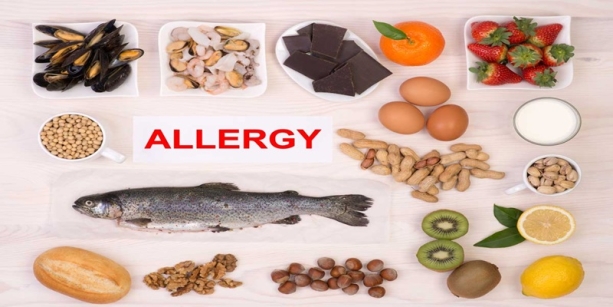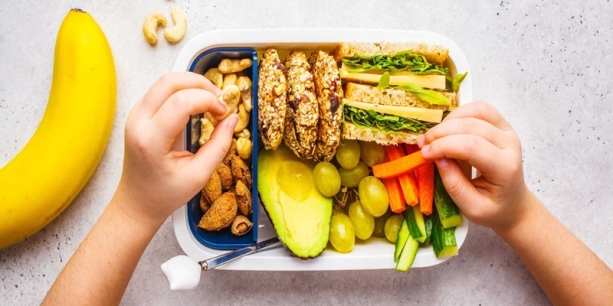Every parent knows that their child’s safety and health always come first, especially when food allergies are involved. Each meal or snack requires careful checking of ingredients and asking questions when eating out. It may seem complicated at times, but with the correct information and strategies, you can manage your child's food allergies effectively and prevent severe reactions.
Every parent knows that their child’s safety and health always come first, especially when food allergies are involved. Each meal or snack requires careful checking of ingredients and asking questions when eating out. It may seem complicated at times, but with the correct information and strategies, you can manage your child's food allergies effectively and prevent severe reactions.
Understanding Food Allergies In Kids
Food allergies occur when a child's immune system mistakes specific food proteins as harmful and triggers a defensive response. Understanding how to manage food allergies is often at the heart of parental concern and anxiety.
Common Allergies and Their Symptoms
Approximately 90% of all food allergies are triggered by eight common food allergens: cow's milk, eggs, peanuts, tree nuts, fish, shellfish, soy, and wheat. Symptoms can range from mild to severe and may include:
Hives or skin rashes
Swelling of the lips, tongue, or throat
Difficulty Breathing or wheezing
Stomach pain, nausea, or vomiting
Anaphylaxis (a severe, potentially life-threatening reaction)
Diagnosis and Treatment
If you believe your child is allergic to a specific food, it is highly recommended to seek help from an allergist. They may request skin or blood tests to accurately identify allergens. Once the allergy is confirmed, the best approach is to avoid the trigger food strictly to prevent reactions.
Common Allergy-Triggering Foods For Kids

Food allergies in children are often associated with specific foods, sometimes referred to as major food allergens, because they are more likely to trigger reactions. In the United States, eight foods account for about 90% of all food allergies:
Milk
Eggs
Peanuts
Tree nuts (such as almonds, cashews, and walnuts)
Fish
Shellfish
Soy
Wheat
It's crucial to be aware of these common allergens, as they often appear in unexpected places. For instance, milk proteins can be found in many processed foods, while soy is a common ingredient in various sauces and marinades.
Emerging Allergens
Besides the well-defined "Big Eight," certain other foods are increasingly recognised as allergens. Some of these are:
Sesame seeds
Corn
Gelatin
Meat (particularly red meat)
Fruits (such as kiwi, strawberries, and citrus)
Do not forget that any food can become allergenic at any time. If you suspect a child may be allergic to certain foods, consult a pediatric allergist.
Strategies For Safe Dining Out With Food Allergies

Eating out with a child who has food allergies can feel stressful, but with some planning, it can be safe and enjoyable. Here are some strategies to help you navigate dining out with confidence:
Research and Plan Ahead
Before visiting a restaurant, check their menu for information on allergens. Many restaurants offer separate allergen-friendly menus or can adjust meals upon request. It's a good idea to call ahead and discuss your child's allergies to ensure the restaurant can accommodate your needs. This preparation helps alleviate Stress upon arrival.
Communicate Clearly with Staff
Speak directly with the manager or chef about your child’s allergies. Clearly explain the severity of the allergy and any concerns about cross-contamination. Ask about how dishes are prepared and what ingredients are used. Clear communication is key to ensuring your child’s safety.
Have a Backup Plan
Even if the restaurant assures you that the food is safe, it's wise to have a backup plan in case of any issues. Bring safe snacks or a meal for your child in case suitable options are not available. If you're concerned about cross-contact, consider bringing your utensils to reduce the risk.
Packing Allergy-Free Lunches And Snacks

Healthy and Safe
Preparing allergen-free meals for your child can feel challenging, but you can still create meals that are safe, tasty, and enjoyable. Stick with basics that are compatible, such as fruits, vegetables, and skinless meats. Try fresh ingredients like Roasted sunflower seed butter instead of peanut butter, and soy yoghurt rather than milk yoghurt. Please note that some additives may contain other ingredients and may not be suitable for your needs.
Preventing Cross-Contamination
When preparing daily lunches, always use separate cutting boards and utensils for preparing foods that are free from allergens. Before preparing food, all work surfaces should be thoroughly cleaned. Use containers with a different colour, just one assignment, or one person's portion to avoid confusion. Use ice packs and insulated containers to keep the food intact and prevent it from spoil
Teaching Your Child
Children know which foods are safe for them to eat. Teach them how to read labels and practice saying "No" to unsafe foods. Encourage them to ask questions if they are unsure about ingredients. You may also prepare a small card with your child's allergy information for them to carry to school.
Ensuring Safe And Healthy Meals For Kids
Keep these steps in mind as you help your child manage food allergies. With knowledge and preparation, you can help your child stay safe. By giving them clear information and preparing ahead, you help them live safely and confidently. Teach them to speak up about their needs, create a supportive environment, and encourage their confidence. With your guidance, they will learn how to manage their allergies effectively daily.


